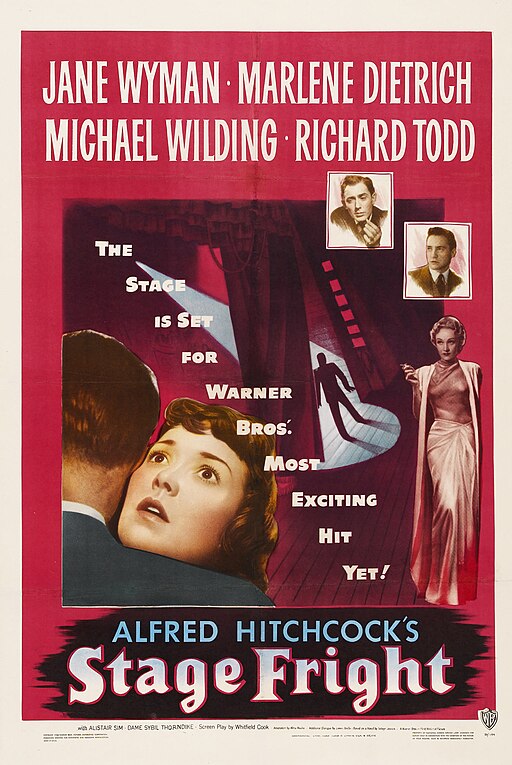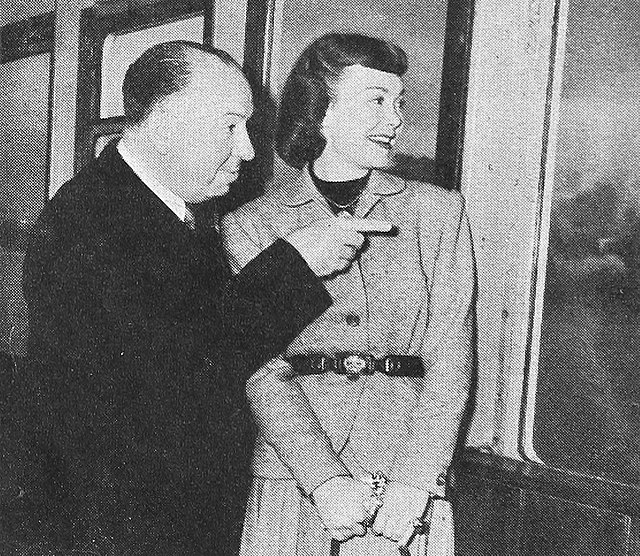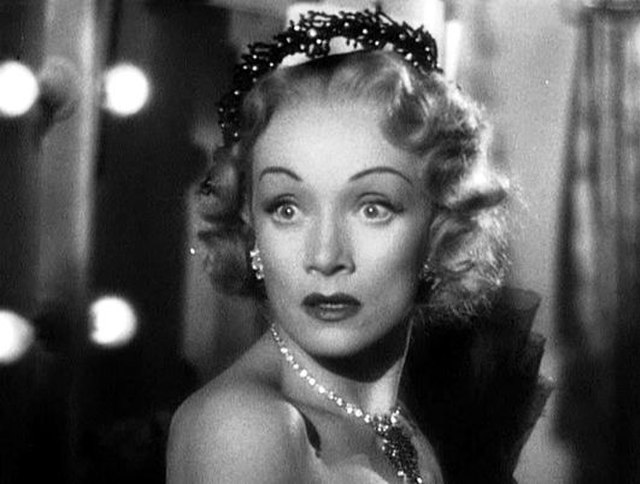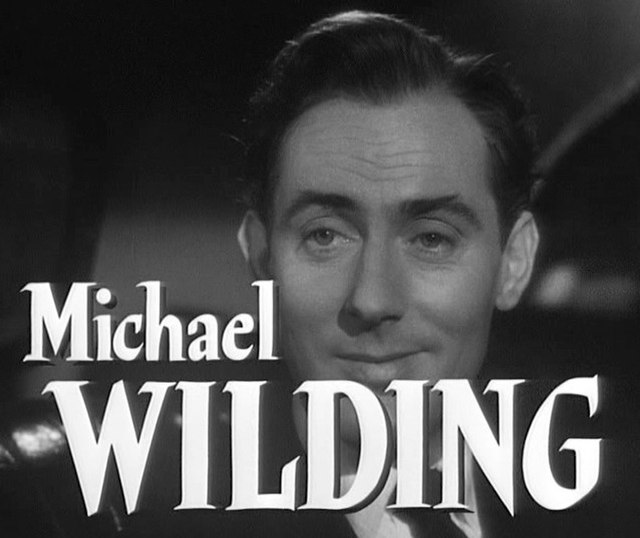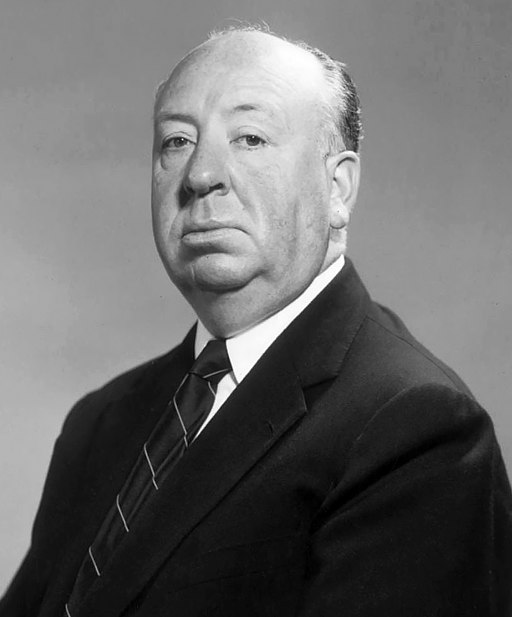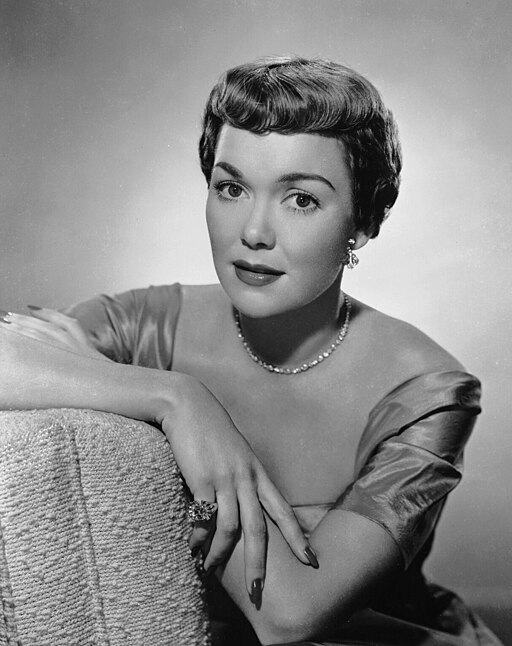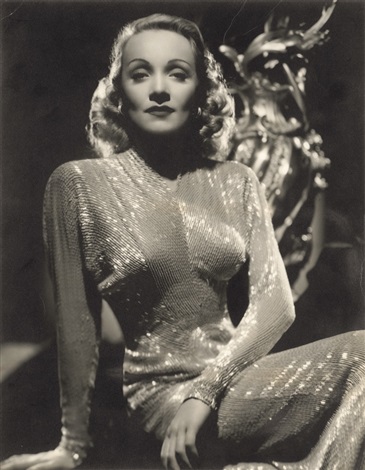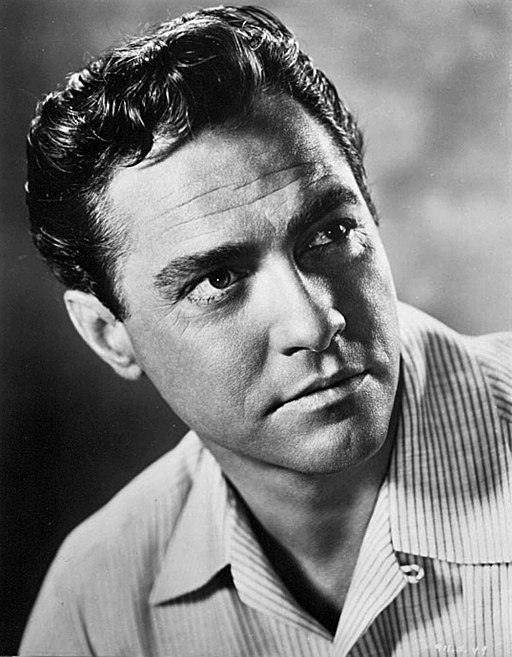Stage Fright - 1950
back| Released by | Warner Bros. |
| Director | Alfred Hitchcock |
| Producer | Alfred Hitchcock |
| Script | Adapted by Whitfield Cook - Alma Reville (uncredited) - Based on the novel |
| Cinematography | Wilkie Cooper |
| Music by | Leighton Lucas |
| Running time | 110 minutes |
| Film budget | $1.5 million |
| Box office sales | $1.9 million |
| Main cast | Jane Wyman - Marlene Dietrich - Richard Todd - Michael Wilding |
Stage Fright
A Gripping Tale of Deception and Suspense
"Stage Fright" is a British film noir thriller that revolves around a young drama student who tries to prove the innocence of a friend accused of murder. The film is notable for its unique narrative technique and Hitchcock's signature style of suspense and psychological intrigue.
Related
Stage Fright – 1950
Summary
"Stage Fright" opens with a frantic Jonathan Cooper (Richard Todd) on the run, seeking help from his friend, Eve Gill (Jane Wyman). Jonathan tells Eve that he is being framed for the murder of Charlotte Inwood's (Marlene Dietrich) husband. Jonathan, who was romantically involved with the famous stage actress Charlotte, explains that he was at her house when Charlotte came home covered in blood, claiming she had accidentally killed her husband. Jonathan helped her by taking her blood-stained dress to be cleaned, but Charlotte double-crossed him, implicating him in the murder.
Eve, a drama student, believes Jonathan’s story and decides to help him. She disguises herself as a maid and infiltrates Charlotte's circle to gather evidence and prove Jonathan's innocence. Eve's father, Commodore Gill (Alastair Sim), also assists in the investigation with his quirky yet astute observations.
As Eve becomes more involved, she gets closer to Detective Inspector Wilfred Smith (Michael Wilding), who is leading the murder investigation. Smith, unaware of Eve's true identity and intentions, develops a romantic interest in her, complicating her mission. Despite the dangers, Eve continues her charade, collecting clues and unraveling Charlotte's manipulative and deceitful nature.
Eve's investigation culminates in a dramatic revelation: Jonathan’s story was a lie. In a tense final sequence, it is revealed that Jonathan was the actual murderer, having killed Charlotte's husband out of jealousy and anger. The final confrontation occurs in a theatre, where Jonathan’s guilt is exposed, and he meets his demise.
Analysis
"Stage Fright" is a quintessential Alfred Hitchcock film, blending suspense, drama, and dark humor. The movie explores themes of deception, performance, and the blurred lines between reality and acting. Here are key aspects of the film analyzed in detail:
- Narrative Structure: Hitchcock employs an unconventional narrative device known as the "unreliable flashback." Early in the film, Jonathan's account of events is presented as a flashback, which the audience initially accepts as truth. This narrative technique plays with the audience's perception and aligns with Hitchcock’s love for surprising twists. The revelation that Jonathan lied subverts expectations and adds depth to the storytelling.
- Character Development: The characters in "Stage Fright" are richly developed and multidimensional. Eve Gill, the protagonist, evolves from a naive drama student into a determined amateur detective. Her resourcefulness and courage drive the plot forward. Charlotte Inwood, portrayed by Marlene Dietrich, epitomizes the femme fatale archetype, exuding charm and danger. Jonathan Cooper’s character transformation from a sympathetic victim to a cold-blooded killer showcases Hitchcock’s skill in crafting complex villains.
- Themes and Symbolism: The film delves into the theme of performance, both on stage and in real life. The theatrical setting and Eve’s background as a drama student highlight how characters perform roles to manipulate others. This theme is mirrored in the plot, where deception and acting are central to the narrative. The use of the theatre as a final showdown location reinforces the idea that the boundary between reality and performance is porous.
- Cinematography and Visual Style: Hitchcock’s direction is marked by meticulous attention to visual detail. The use of shadows, mirrors, and reflective surfaces creates an atmosphere of suspense and unease. The cinematography by Wilkie Cooper complements Hitchcock’s vision, using innovative camera angles and movements to enhance the tension. The stark contrasts and dramatic lighting are reminiscent of film noir aesthetics.
- Music and Sound: Leighton Lucas’s score adds a haunting and suspenseful quality to the film. The music underscores key moments, enhancing the emotional impact and heightening the sense of danger. Sound design is also crucial in building suspense, with strategic use of silence and sudden sounds to jolt the audience.
- Hitchcock’s Cameo: True to his tradition, Alfred Hitchcock makes a cameo appearance in "Stage Fright." He can be seen walking past a rehearsal room at around the 39-minute mark, adding a touch of self-referential humor to the film.
"Stage Fright" stands out in Hitchcock’s oeuvre for its clever narrative tricks and strong performances. It is a film that not only entertains but also invites viewers to question the nature of truth and the facades people construct. The interplay between acting and reality, coupled with Hitchcock’s masterful direction, makes "Stage Fright" a compelling and thought-provoking thriller.
Classic Trailer of Stage Fright 1950:
Full Cast:
- Jane Wyman as Eve Gill
- Marlene Dietrich as Charlotte Inwood
- Michael Wilding as Detective Inspector Wilfred Smith
- Richard Todd as Jonathan Cooper
- Alastair Sim as Commodore Gill
- Sybil Thorndike as Mrs. Gill
- Kay Walsh as Nellie Goode
- Hector MacGregor as Freddie Williams
- Joyce Grenfell as 'Lovely Ducks'
- André Morell as Inspector Byard
- Miles Malleson as Mr. Fortesque
- André Charlot as Dr. Mathias
- Patricia Hitchcock as Chubby Bannister
- Ballard Berkeley as Sergeant Mellish
- G. H. Mulcaster as Captain (uncredited)
- Stringer Davis as Stage Doorkeeper (uncredited)
- Alfred Hitchcock as Man Staring at Eve from Stalls (uncredited cameo)
Analysis of Alfred Hitchcock's Direction in "Stage Fright":
Alfred Hitchcock's direction in "Stage Fright" showcases his mastery of suspense, psychological complexity, and innovative storytelling techniques. Here’s an in-depth analysis of his directorial approach in this 1950 thriller:
Narrative Structure and Unreliable Narrator
One of the standout features of "Stage Fright" is Hitchcock’s use of an unreliable narrator. Early in the film, Jonathan Cooper’s account of the murder is presented through a flashback, which the audience is led to believe is truthful. This narrative choice plays with the viewer’s trust and expectations, setting up a shocking twist when the truth is revealed. Hitchcock’s manipulation of narrative reliability underscores his ability to engage and surprise the audience, adding layers of complexity to the story.
Characterization and Performances
Hitchcock’s direction brings out nuanced performances from the cast, particularly from Jane Wyman and Marlene Dietrich. He expertly guides Wyman in portraying Eve Gill’s transformation from a naive drama student to a resourceful amateur detective. Marlene Dietrich, as Charlotte Inwood, exudes charm and menace, embodying the archetype of the femme fatale with a captivating presence. Hitchcock’s attention to character detail ensures that each role is well-defined and integral to the plot’s development.
Visual Style and Cinematography
Hitchcock’s visual style in "Stage Fright" is marked by a meticulous use of lighting, camera angles, and set design to create an atmosphere of suspense and intrigue. Cinematographer Wilkie Cooper collaborates effectively with Hitchcock to employ high-contrast lighting and strategic shadow play, enhancing the film noir aesthetic. Hitchcock uses close-ups and tight framing to capture the characters' emotions and tensions, drawing the audience deeper into the psychological drama.
Theatrical Elements and Themes
The film’s setting in the world of theatre allows Hitchcock to explore themes of performance and reality. He cleverly blurs the lines between acting on stage and the characters' deceptions in real life. This thematic interplay is evident in scenes where characters disguise their true intentions, much like actors playing roles. The theatrical milieu also provides a rich backdrop for the story, with Hitchcock utilizing stage sets, costumes, and props to reinforce the idea of life as a performance.
Suspense and Pacing
Hitchcock’s command over suspense is evident throughout "Stage Fright." He skillfully builds tension through careful pacing and the strategic release of information. The film’s climax, set in a theatre, is a masterclass in suspenseful direction, combining dramatic irony, escalating danger, and a tightly choreographed sequence of events. Hitchcock’s ability to maintain suspense keeps the audience engaged and on edge until the final revelation.
Sound and Music
The film’s sound design and Leighton Lucas’s score are integral to Hitchcock’s direction. The music underscores key moments of tension and emotion, enhancing the overall atmosphere of suspense. Hitchcock uses sound effects and music cues to manipulate the audience’s emotional responses, adding another layer of depth to the storytelling.
Hitchcock’s Cameo
True to his tradition, Hitchcock makes a brief, uncredited cameo appearance in "Stage Fright." His presence, although fleeting, is a playful nod to his fans and a hallmark of his films. In "Stage Fright," he can be seen walking past a rehearsal room, adding a touch of self-referential humor.
Conclusion
Alfred Hitchcock’s direction in "Stage Fright" exemplifies his expertise in crafting psychological thrillers. His innovative narrative techniques, meticulous attention to visual and thematic details, and masterful control over suspense and pacing contribute to a compelling and multilayered film. "Stage Fright" stands as a testament to Hitchcock’s ability to blend complex storytelling with stylistic flair, making it a notable entry in his illustrious career.
Compelling Performance of Jane Wyman:
Jane Wyman delivers a compelling and multifaceted performance as Eve Gill in Alfred Hitchcock's 1950 thriller "Stage Fright." Her portrayal is a central element of the film's intrigue and emotional depth, showcasing her range and versatility as an actress.
Character Development and Transformation
Wyman's character, Eve Gill, undergoes significant development throughout the film, transitioning from a naive and eager drama student to a determined and resourceful amateur detective. Wyman captures this transformation with remarkable subtlety and skill. In the early scenes, she conveys Eve's innocence and enthusiasm, creating a relatable and sympathetic character. As the narrative progresses, Wyman seamlessly shifts to a more determined and courageous persona, demonstrating Eve's growing resolve to uncover the truth and clear her friend’s name.
Emotional Depth and Nuance
Wyman’s performance is characterized by her ability to convey a wide range of emotions with nuance. She effectively portrays Eve's initial excitement and curiosity, followed by her mounting fear and anxiety as she delves deeper into the investigation. Wyman’s expressive face and controlled body language communicate Eve’s internal struggles and determination, making her journey both believable and engaging. Her ability to balance vulnerability with strength adds depth to the character, enhancing the film's emotional impact.
Chemistry with Other Cast Members
Wyman’s interactions with the other characters, particularly with Marlene Dietrich's Charlotte Inwood and Michael Wilding's Detective Inspector Wilfred Smith, are key to the film's dynamic. Her scenes with Dietrich are charged with tension and suspicion, reflecting Eve's covert mission and her growing realization of Charlotte's duplicity. Wyman’s chemistry with Wilding adds a romantic subplot to the film, infusing their scenes with a mix of flirtation and genuine connection. These interactions highlight Wyman's versatility and ability to adapt her performance to different relational contexts.
Physicality and Presence
Throughout the film, Wyman demonstrates a keen understanding of physicality in her performance. Her use of movement and gestures helps to define Eve's character and her evolution. Whether she is portraying the cautious maid infiltrating Charlotte's household or the determined woman piecing together clues, Wyman’s physical presence is consistently engaging. Her ability to embody Eve’s shifting roles and disguises underscores the themes of performance and deception that are central to the film.
Moments of Suspense and Tension
In the suspenseful moments that Hitchcock meticulously crafts, Wyman's performance is particularly effective. Her reactions to the unfolding events, from moments of quiet tension to the climactic revelations, are finely tuned to the film’s atmospheric demands. Wyman's ability to maintain a sense of urgency and fear without overacting enhances the suspense and keeps the audience invested in Eve’s fate.
Dialogue Delivery and Expressiveness
Wyman’s delivery of dialogue is another highlight of her performance. She brings a naturalistic quality to Eve’s lines, making her character’s motivations and emotions clear and relatable. Her expressiveness, both in her speech and in her silent reactions, adds layers to the storytelling. Whether she is engaging in witty banter, expressing genuine concern, or confronting a dangerous situation, Wyman's dialogue delivery is consistently compelling.
Conclusion of Jane Wyman’s Style
Jane Wyman's performance in "Stage Fright" is a standout element of the film. Her ability to convey the complexity of Eve Gill's character, from her initial naivety to her determined pursuit of justice, showcases Wyman's exceptional range and talent. Through her nuanced portrayal, Wyman brings depth and authenticity to the role, enhancing the film’s emotional and suspenseful impact. Her performance is integral to the film’s success, making Eve Gill one of the memorable characters in Hitchcock’s repertoire of strong and resourceful female protagonists.
Notable Film Lines:
Eve Gill (Jane Wyman): "I don't understand you, Johnny. You say you love her, and yet you hide her dress, you lie for her, and now you're running away."
This quote encapsulates Eve’s confusion and growing realization of the complex web of lies surrounding the murder.
Charlotte Inwood (Marlene Dietrich): "If I were to die right now, I’d die the way I lived: merciless, and with style."
Charlotte’s self-awareness and acceptance of her manipulative nature are evident in this line, highlighting her femme fatale persona.
Commodore Gill (Alastair Sim): "A man’s reach should exceed his grasp, or what’s a heaven for?"
This philosophical reflection by Eve’s father adds depth to his character and provides a moment of introspection amidst the tension.
Detective Inspector Wilfred Smith (Michael Wilding): "In my profession, I deal with facts, not feelings. But you, Eve, have made me realize there’s more to life than cold, hard facts."
This quote illustrates Smith’s growing affection for Eve and hints at the romantic subplot in the film.
Jonathan Cooper (Richard Todd): "I didn’t mean to kill him. It just happened. One moment of madness, and now everything's ruined."
Jonathan’s confession reveals the truth about his actions, marking a pivotal moment in the film’s plot.
Nellie Goode (Kay Walsh): "Life’s just a series of acts, one after the other, until the final curtain falls."
Nellie’s line ties into the film’s theme of performance and deception, reflecting the theatrical setting.
Eve Gill: "Sometimes I think we all live in a world of make-believe, pretending to be what we’re not."
Eve’s observation underscores the central theme of appearances versus reality, a recurring motif in Hitchcock’s work.
Charlotte Inwood: "In this world, my dear, it’s not what you know, but what you can prove."
This line highlights Charlotte’s cynical worldview and her reliance on manipulation and deceit.
Commodore Gill: "You can tell a lot about a person by the way they handle a crisis. Some rise to the occasion, others crumble."
This quote reflects the Commodore’s wisdom and adds insight into the characters’ behaviors under pressure.
Eve Gill: "I wanted to believe him. I really did. But the truth has a way of surfacing, no matter how much you try to bury it."
Eve’s realization about Jonathan’s guilt is a critical moment in the film, emphasizing the inevitability of truth.
Recognition for Stage Fright:
"Stage Fright," directed by Alfred Hitchcock and released in 1950, did not receive any major awards or nominations. Despite its intriguing plot and strong performances, the film was not recognized by major film award bodies such as the Academy Awards, Golden Globe Awards, or BAFTA Awards at the time of its release.
While the film has gained appreciation over time, particularly among Hitchcock enthusiasts and film historians, it did not garner significant award recognition during its initial release period. The movie is often noted for its narrative techniques and the performances of its cast, especially Jane Wyman and Marlene Dietrich, but it did not translate into formal accolades.
Classic Scenes from the Movie:
The Opening Chase Scene
The film opens with a thrilling chase scene where Jonathan Cooper (Richard Todd) is on the run and seeks refuge with Eve Gill (Jane Wyman). This scene sets the tone for the movie, establishing a sense of urgency and danger. Hitchcock’s use of tight camera angles and quick cuts effectively conveys Jonathan’s desperation and the immediate threat he faces. This scene also introduces the central plot involving Jonathan’s claim of being framed for murder.
Eve’s Disguise and Infiltration
Eve’s transformation into "Doris Tinsdale," the maid, to infiltrate Charlotte Inwood's (Marlene Dietrich) household is a pivotal scene. This moment showcases Eve's resourcefulness and determination to uncover the truth. The tension is palpable as she navigates the household, trying to gather information while avoiding detection. Jane Wyman’s performance here highlights her character’s courage and quick thinking.
Charlotte Inwood's Performance
Marlene Dietrich’s character, Charlotte Inwood, performs a musical number on stage. This scene is memorable not only for Dietrich’s charismatic presence but also for the underlying tension as Eve watches from the wings. Charlotte’s performance is juxtaposed with the darker reality of her involvement in the murder, highlighting the film’s theme of deception and performance. Dietrich’s sultry rendition adds a layer of allure and danger to her character.
The Dress with Bloodstains
Eve, posing as Doris, finds Charlotte’s dress with bloodstains. This discovery is crucial evidence that Jonathan’s story might have some truth to it. The scene is tense as Eve must act quickly to hide her reactions and avoid suspicion. Hitchcock expertly builds suspense, using close-ups of the dress and Eve’s nervous expressions to keep the audience on edge.
Confrontation in the Theater
The climax of the film takes place in a theatre, a fitting location given the film’s exploration of performance and reality. Jonathan’s true nature is revealed during this confrontation, leading to a dramatic chase and struggle. The use of the theatrical setting enhances the drama, with Hitchcock employing shadows, dramatic lighting, and the physical space of the theatre to heighten the suspense. This scene encapsulates the film’s central themes and provides a satisfying resolution to the plot.
The Commodore’s Investigation
Commodore Gill (Alastair Sim) conducts his own investigation, providing both comic relief and critical insight. One standout moment is when he subtly interrogates Nellie Goode (Kay Walsh) about her knowledge of the murder. His quirky yet shrewd approach to solving the mystery adds depth to his character and provides a contrast to the more serious tone of the main investigation. The interplay between the Commodore and Nellie is both humorous and revealing, contributing to the overall narrative.
Eve and Inspector Smith’s Growing Relationship
Throughout the film, the relationship between Eve and Detective Inspector Wilfred Smith (Michael Wilding) develops, adding a romantic subplot. A particularly memorable scene is their conversation in the garden, where Smith reveals his suspicions and feelings to Eve. The natural setting and intimate dialogue offer a brief respite from the tension, allowing for character development and a deeper emotional connection between the characters.

